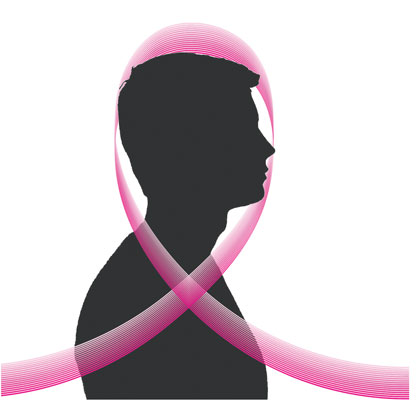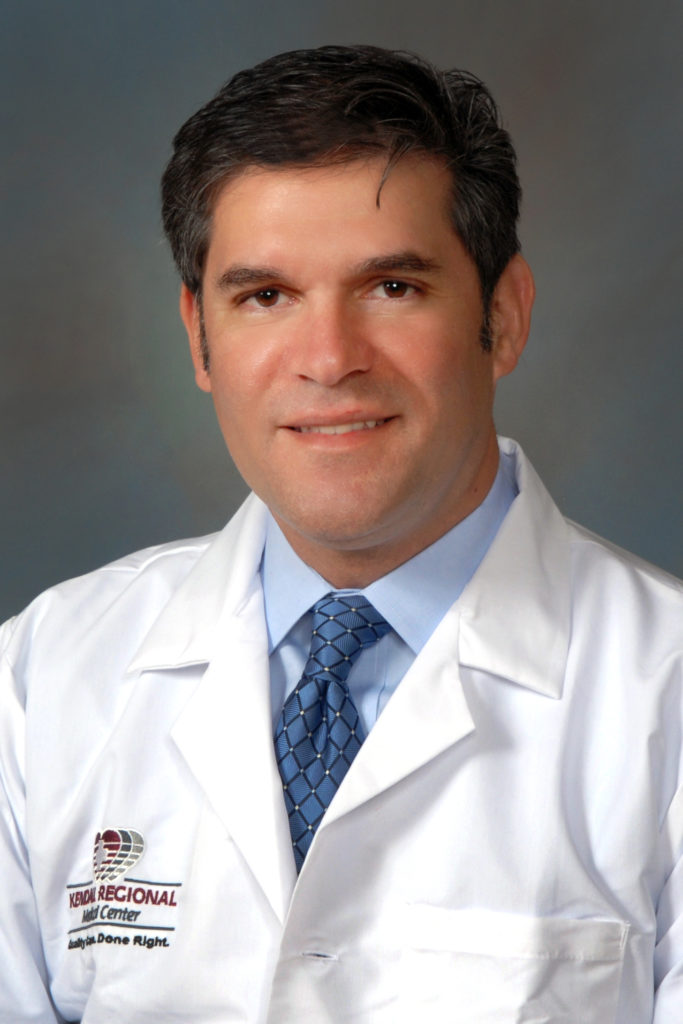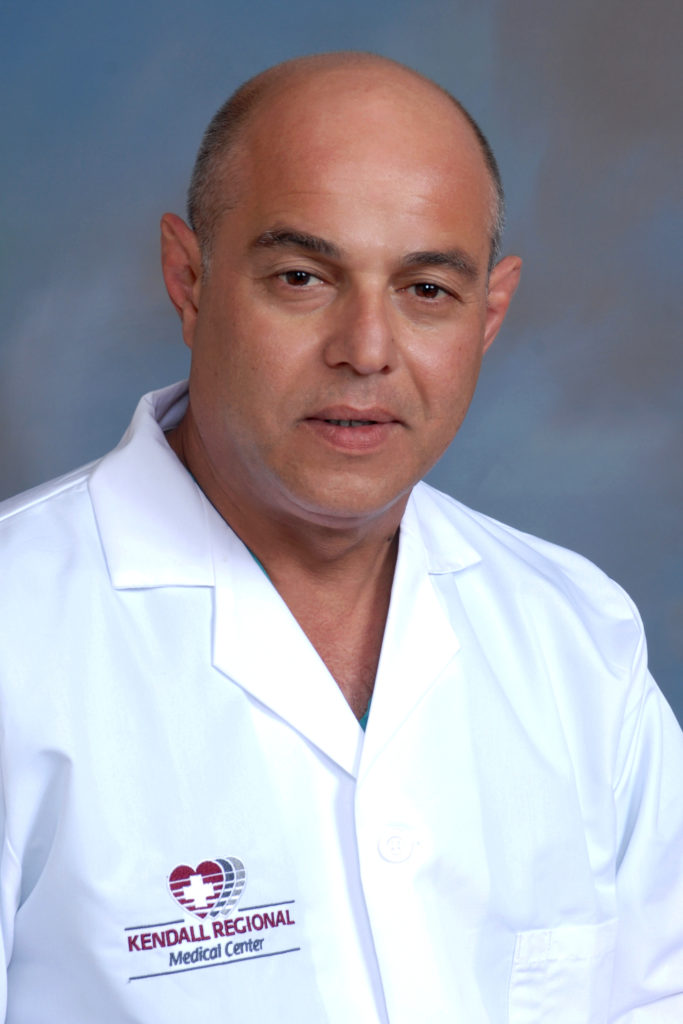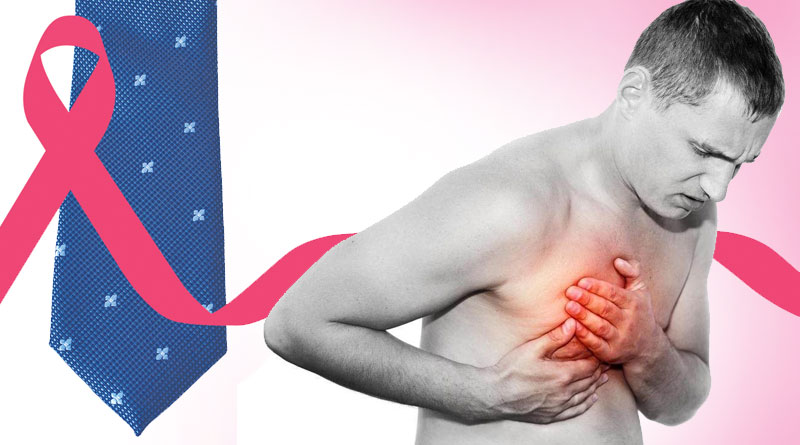Men get breast cancer too.
By: Diana Bello Aristizábal
DORAL, FL – October is here once again. A time when millions of people around the world wear pink to honor breast cancer victims and raise awareness around this type of cancer that, according to the National Cancer Institute, it is the most common one in the United States with more than 271,270 new cases estimated for 2019.
However, in Breast Cancer Awareness Month, often times the male population is not involved in the conversation when, contrary to popular belief, men are also victims of this scourge, although the incidence is much lower because less than 1 percent of all cases occur in men.
Despite these relatively positive statistics, the disease is usually detected later in men than in women, which puts them at high risk, since cancer is often in advanced stages when diagnosed.
This is mainly due to the fact that men do not get screening on a regular basis, because of their low incidence, as is the case with women who get a mammogram (breast x-ray) annually after they turn 40 years old.
 Given this scenario, this issue often goes unnoticed in families even when it is clear that there are associated risk factors, symptoms that indicate the possible presence of the disease, key tests that can contribute to the success of the treatment, and the fact that it can be fatal despite its low incidence. About 500 men in the United States will die from it in 2019.
Given this scenario, this issue often goes unnoticed in families even when it is clear that there are associated risk factors, symptoms that indicate the possible presence of the disease, key tests that can contribute to the success of the treatment, and the fact that it can be fatal despite its low incidence. About 500 men in the United States will die from it in 2019.
A proof of the little knowledge the world has around male breast cancer is the surprise that men who have suffered from it have expressed in the media. “I never thought we could be victims of breast cancer,” said Kenyan Moses Musonga, age 67, when talking about his diagnosis of breast cancer in 2013, at phase three, in an interview for BBC World.
The same happened with Mathew Knowless, the father of singer Beyoncé, who recently talked in Good Morning America about his surprise and frustration when he learned he had this disease for which he got surgery on in June. “Men want to keep this as a secret because we feel ashamed,” said Knowless.
In this article, we want to break with the myth that men are immune to this disease, and include them in the conversation by highlighting who is at risk, how to detect it on time, what tests are key, and what treatments are best for them.
Early detection = greater survival rate
One of the main reasons why men are not diagnosed early is that they are usually not thinking about this topic, which makes them less observant to their physical changes, and less aware of their family history.
“Men usually do not touch their breasts. That can be a problem because an unusual mass that should be seen by the surgeon or needs a biopsy can remain unnoticed,” says Dr. Carlos Guida, oncologist and hematologist of Kendall Regional Medical Center.
In the face of this, the first recommendation is to make the self-exam a steady habit in order to detect early any abnormality or symptom associated with the disease.

“Like women, all men over 40 must conduct a self-exam once a month because that way it is easier to detect a tumor on time, when it is still small, and then order an ultrasound or mammogram to study it,” says Dr. Braulio Sabates, general surgeon at Kendall Regional Medical Center, specialist in breast procedures and stereotactic biopsy.
Performing a self-exam is a simple task that involves observing and touching the breasts and adjacent areas until reaching the axilla. In the observation part, men must pay attention to the size and shape of the breasts and nipples, as well as checking if there is a pain, swelling, lumps, dimpling, scaly skin, or other skin changes, and liquid is coming out.
For Dr. Sabates, the most frequent symptoms of this type of cancer are breast pain or growth, a mass in them or the chest wall, and liquid discharge of the nipples.
It should be noted, as Dr. Guida points out, that not all unusual masses in the breasts or lumps in the armpits are due to a malignant tumor. “Sometimes it can be an abscess or a lipoma. Therefore, it is best to ask the doctor and get tested to be certain,” says Dr. Guida.
But in addition to monitoring physical changes, men must also know their family medical history, as genetics plays an important role in this. Those who have relatives to the first degree of blood (parents and siblings regardless of gender) with a history in this disease are at a higher risk.
“Any man who has a family history is twice as likely to suffer from breast cancer compared to another one who doesn’t. If this is the case, I recommend being tested annually after the age of 40,” says Dr. Sabates.
There is also a greater risk when there are family members within the household with mutations of the BRCA1 and BRCA2 genes. If so, the patient should get a screening to determine if such mutations are present.
“These mutations are seen mainly in Jewish and European populations, but anyone can have them,” says Dr. Guida, who recommends this test to all patients with a diagnosis in breast cancer, as it serves as a tool to find out if there is a genetic origin.
When mutations of these genes are found, breast cancer typically appears at an earlier age. Otherwise, the disease is shown between 60 and 75 years of age in most cases.
Therefore, if there is certainty about the presence of these mutations in the nearest family group, testing should be performed as soon as possible. “If the whole family is BRCA positive, even children can be evaluated,” adds Dr. Guida.
It should be clarified that although genetics is usually the number one risk factor for breast cancer, there are others involved, according to the American Cancer Society. These are exposure to chemicals or radiation, the use of hormones, high alcohol intake, liver disease, estrogen treatments, obesity, testicular conditions, and Klinefelter syndrome.
Treatment options
When a person is diagnosed with breast cancer, the support he or she receives is multidisciplinary. This means that the patient will be evaluated by the primary physician, a specialized surgeon, and an oncologist. They will all work together in the patient’s case.

“The oncologist will define what kind of therapy the patient will receive, before or after surgery, (chemotherapy, radiation or hormonal therapy) according to the characteristics of the tumor and what is found in it,” explains Dr. Carlos Guida, who thinks each tumor is unique and must be addressed within what is known as personalized medicine.
Among the characteristics that will be analyzed are the type of tumor, as there are different types such as carcinoma in situ, invasive ductal carcinoma or invasive lobular carcinoma; size, hormonal receptors, whether or not the armpit is involved, the cancer stage, and if there is any genetic mutation, among others.
As for surgery, according to Dr. Sabates, the surgical options are the same for both men and women with the difference that since men’s breasts are typically not large, they are usually not good candidates for a lumpectomy which purpose is to preserve the breast by removing only the tumor and part of the breast tissue.
For this reason, the most common procedure for men is a modified radical mastectomy in which the whole breast is removed, along with the nipples and lymph nodes. When the cancer is widespread and involves the muscles of the chest wall, the option is a radical mastectomy in which the muscles are also removed.
People who have positive mutations of any of the BRCA1 and BRCA2 genes may also need to undergo a prophylactic mastectomy in the breast that is cancer-free.
But oftentimes, surgery alone is not enough to treat male breast cancer. “As men usually do not have mammograms, they are often diagnosed later when they already have very large tumors that are affecting the lymph nodes. In these cases, they will also need chemotherapy and, sometimes, radiation, ”says Dr. Sabates.
Whatever the case is, the chances of success in treatments increase when the tumor is detected on time. With early detection, it is also more likely that the tumor will not return in the future.
“Early detection is vital for having good results and high cure and survival rates,” concludes Dr. Sabates.

